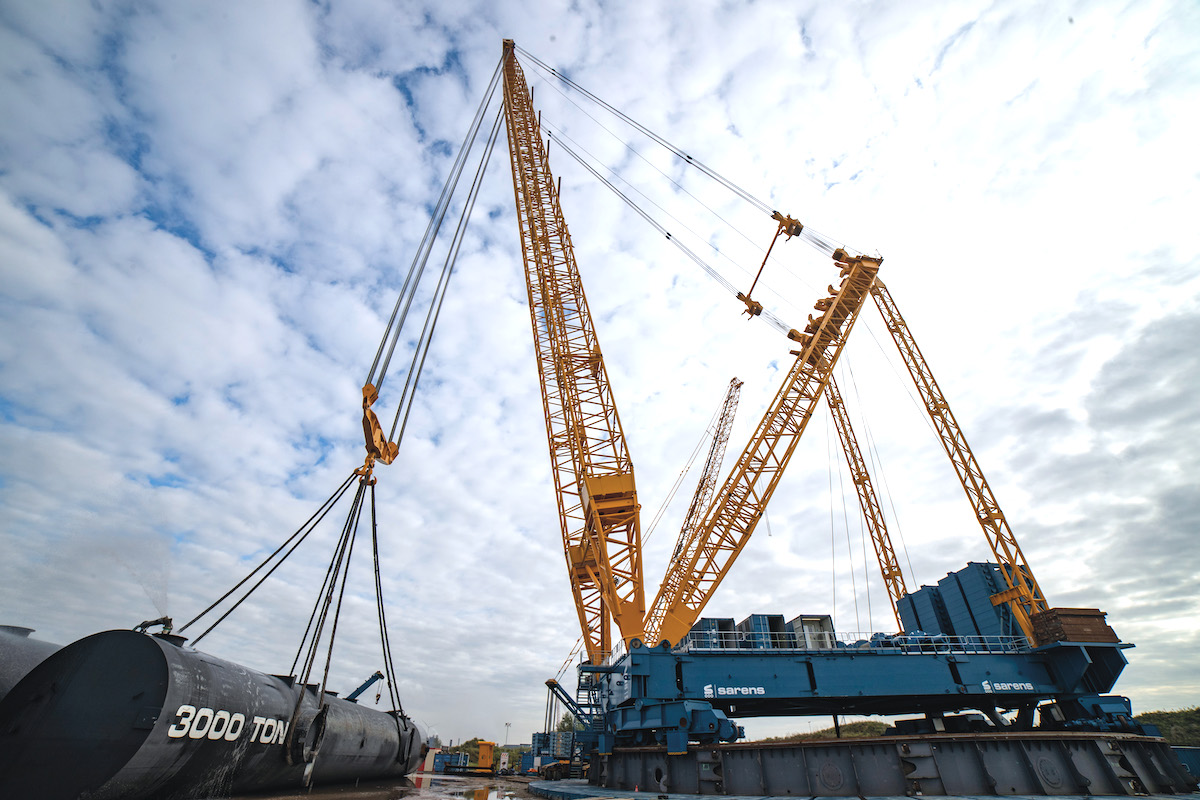The smallest Giant
14 December 2020As the SGC-90 is ready for its first job, Sotiris Kanaris talked to Sarens’s director of Technical Solutions, Project & Engineering Carl Sarens and R&D engineer Tom Derveaux about the process of developing the new ring crane.
The Sarens Giant Crane (SGC) series was launched in 2011, when the 120,000tm SGC-120 was introduced. Over the past four years, the company has invested heavily in the series, which now comprises four models.
In 2017, Sarens presented the 140,000tm SGC-140, which since its launch has been working at the Tengizchevroil (TCO) project in Kazakhstan. Two years later, the heavy lift specialist introduced an even bigger model, the 250,000tm SGC-250. This model, also known as Big Carl, has been working in the UK for the construction of the Hinkley Point C nuclear power plant.
The trend towards higher capacity models was altered last month, when the smallest SGC crane was released. The SGC-90—also known as ‘The Little Celeste’, named after Matthias Sarens’s daughter— has a maximum capacity of 1,650t and a load moment of 99,000tm.
Commenting on the launch of the new model, Carl Sarens said: “All ring cranes are performing well; therefore we decided to create another one, as there is potential at the moment.”
The heavy lift specialist’s engineering, research development training and standardisation (RDTS) and technical solutions departments collaborated to decide on the capacity of the new model. “The SGC-90 gives us the opportunity to fulfill the market needs in the 100.000tm class,” said Carl Sarens. “We see that a capacity of 1650t suits a lot of demands.”
The most significant difference between this model and other SGC cranes is that it is electric rather than hydraulic. Carl Sarens said the concept of an electric crane was on the table from the start: “An electric crane has a lot of advantages; it is silent, very reliable and maintenance friendly. We have no exhaust, no oil contamination hazards.”
A year and a half ago Sarens’s RDTS team started the development of the new crane. “We deployed an interdisciplinary team of over ten engineers,” he added.
There are some differences in the final design compared to the original one. “The drive train and winches are all new. In addition, structural components are refurbished and some parts are also new to increase capacity,” Derveaux explained. Unlike the previous models, the SGC-90 has one slewing ring.
The final design was of a machine with a ring diameter of 35m and maximum counterweight of 2,700t. The SGC-90 can be configured with main boom lengths of 100, 120, and 130m and a small jib of 200t. The Sarens heavy duty and light jib can also be used to reach a maximum hook height of 170m.
This crane was also designed to be energy-efficient, as it is able to produce its own energy. “It re-uses energy when lowering the hook and boom. We can recover all the energy when connected to the grid,” Derveaux said.
The team performed all calculations and coordinated with different contractors to construct the crane on a tight timeline.“We have a good communication with our different contractors. The supply of components was not affected by Covid-19, as all structural components were ordered before Covid-19,” said Carl Sarens. A number of operators were deployed to put together the crane and load test it during the month of October. The testing process involved structural and dynamic overload tests at different radii of the crane, as well as function and safety tests with and without nominal load.
After the successful completion of the tests, the crane was disassembled and it is ready for its ready to go to its first project in the UK. The crane is not containerised; talking about the process of transportation Carl Sarens says: “We transport the crane in bulk just as we transport our crawler or lattice boom cranes.”
To the question whether there are plans for further expansion of the SGC series, he says that currently there are no such plans.
